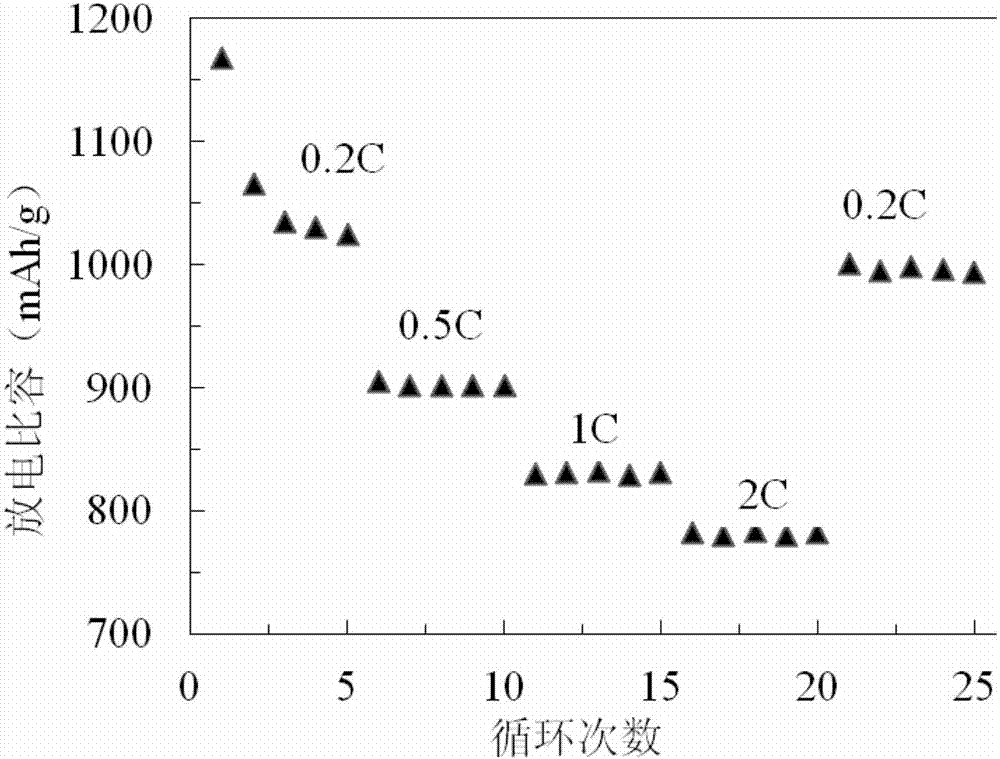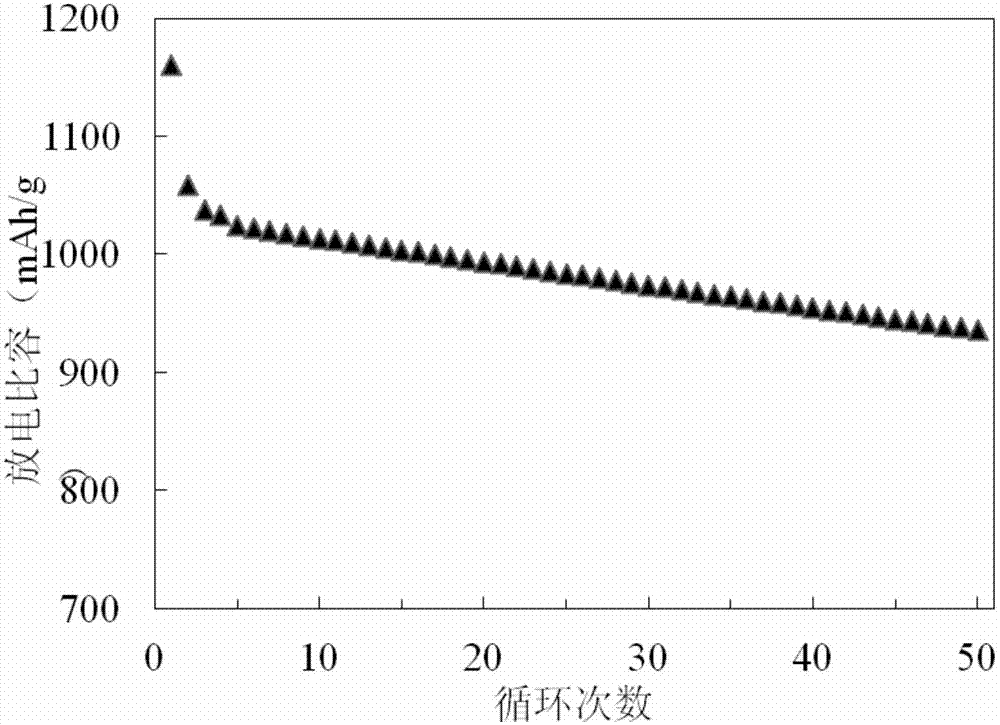Water-based electrode binder for sulfur positive electrode and preparation method thereof
A water-based, binder technology, applied in adhesives, battery electrodes, circuits, etc., can solve the problems of active material loss, conductive network collapse, electrode particle shedding, etc., to achieve good control, reduce agglomeration, and fast polymerization reaction Effect
- Summary
- Abstract
- Description
- Claims
- Application Information
AI Technical Summary
Problems solved by technology
Method used
Image
Examples
preparation example Construction
[0025] The preparation method of the sulfur cathode water-based binder butyl acrylate / styrene block copolymer latex of the present invention comprises the following steps:
[0026] (1) 0.24-0.96 parts by weight of amphiphilic macromolecular reversible addition fragmentation chain transfer reagent is stirred and dissolved in 24-41 parts by weight of water to form an aqueous phase, and then 10 parts by weight of BA is poured into the reactor and stirred and mixed; Raise the reaction temperature to 60-80°C, keep stirring, pass nitrogen to remove oxygen for 10-30 minutes, add 0.003-0.014 parts by weight of a water-soluble initiator, and polymerize for about 30-90 minutes to obtain R-AA n1 -b-St n2 -b-BA n3 -X block copolymer, R-AA n1 -b-St n2 -b-BA n3 -X block copolymers are stably dispersed in water in the form of particles to form latex;
[0027] (2) Add 2.5-20 parts by weight of St monomer and 10-47 parts by weight of water to the latex obtained in step 1, and continue to re...
Embodiment 1
[0048] (1) 0.48 parts by weight of amphiphilic macromolecular reversible addition fragmentation chain transfer reagent is stirred and dissolved in 24 parts by weight of water to form an aqueous phase, then 10 parts by weight of BA is poured into the reactor and stirred and mixed; the reaction temperature is raised To 70°C, keep stirring, pass nitrogen to remove oxygen for 30 minutes, add 0.01 parts by weight of water-soluble initiator, and polymerize for about 60 minutes to obtain R-AA n1 -b-St n2 -b-BA n3 -X block copolymer, R-AA n1 -b-St n2 -b-BA n3 -X block copolymers are stably dispersed in water in the form of particles to form latex;
[0049] (2) Add 5 parts by weight of St monomer and 12 parts by weight of water to the latex obtained in step 1, and continue to react for about 90 minutes to obtain R-AA n1 -b-St n2 -b-BA n3 -b-St n4 -X block copolymer, R-AA n1 -b-St n2 -b-BA n3 -b-St n4 -X block copolymers are stably dispersed in water in the form of particles...
Embodiment 2
[0056] (1) 0.96 parts by weight of amphiphilic macromolecular reversible addition fragmentation chain transfer reagent is stirred and dissolved in 33 parts by weight of water to form an aqueous phase, then 10 parts by weight of BA is poured into the reactor and stirred and mixed; the reaction temperature is raised To 80°C, keep stirring, pass nitrogen to remove oxygen for 20 minutes, add 0.014 parts by weight of water-soluble initiator, and polymerize for about 30 minutes to obtain R-AA n1 -b-St n2 -b-BA n3 -X block copolymer, R-AA n1 -b-St n2 -b-BA n3 -X block copolymers are stably dispersed in water in the form of particles to form latex;
[0057](2) Add 10 parts by weight of St monomer and 30 parts by weight of water to the latex obtained in step 1, and continue to react for about 45 minutes to obtain R-AA n1 -b-St n2 -b-BA n3 -b-St n4 -X block copolymer, R-AA n1 -b-St n2 -b-BA n3 -b-St n4 -X block copolymers are stably dispersed in water in the form of particle...
PUM
 Login to View More
Login to View More Abstract
Description
Claims
Application Information
 Login to View More
Login to View More - R&D
- Intellectual Property
- Life Sciences
- Materials
- Tech Scout
- Unparalleled Data Quality
- Higher Quality Content
- 60% Fewer Hallucinations
Browse by: Latest US Patents, China's latest patents, Technical Efficacy Thesaurus, Application Domain, Technology Topic, Popular Technical Reports.
© 2025 PatSnap. All rights reserved.Legal|Privacy policy|Modern Slavery Act Transparency Statement|Sitemap|About US| Contact US: help@patsnap.com



